Shift to the Cloud at the Core of Restaged OCX Program
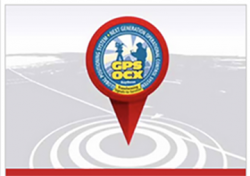
Key details are emerging about how Air Force managers are working to pull into line the substantially delayed and over budget program to build a new GPS ground system.
By Inside GNSS
Key details are emerging about how Air Force managers are working to pull into line the substantially delayed and over budget program to build a new GPS ground system.
By Inside GNSS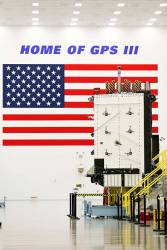 GPS III SV01 now awaits a call up to begin pre-launch preparations. Photo: Lockheed Martin.
GPS III SV01 now awaits a call up to begin pre-launch preparations. Photo: Lockheed Martin.Ushering in a new era of advanced Global Positioning System technology, the U.S. Air Force this week declared the first Lockheed Martin-built GPS III satellite “Available for Launch.”
The Air Force’s “AFL” declaration is the final acceptance of Lockheed Martin’s first GPS III Space Vehicle (GPS III SV01) prior to its expected 2018 launch. GPS III SV01 will bring new capabilities to U.S. and allied military forces, and a new civil signal that will improve future connectivity worldwide for commercial and civilian users.
By Inside GNSS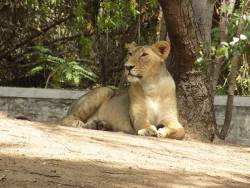 The Nehru Zoological Park is a zoo located near Mir Alam Tank in Hyderabad, Telangana, India. Wikimdeia Commons photo by Bharadwaj Kasula.
The Nehru Zoological Park is a zoo located near Mir Alam Tank in Hyderabad, Telangana, India. Wikimdeia Commons photo by Bharadwaj Kasula.The Research and Training Unit for Navigational Electronics and the Department of Civil Engineering, Osmania University, Hyderabad are conducting a 3-day workshop on GNSS.
The main objective of this course is to introduce the basic concepts of GNSS, its applications and its limitations.
This basic course will cover the topics:
• Principle of operation of GPS or any GNSS system
• Architecture of variopus systems including GPS, GLONASS, Galileo, BeiDou and NavIC
• Errors in GPS or GNSS
• Principle of operation and architecture
• Signal structure of GNSSs, DGSPS, augmentation systems, WADGPS
• Applications of GNSS in the areas of Civil Engineering, Aviation, Remote Sensing, Geoinformatics, Forest, Atmospheric and Environmental fields
Participants
Expected participants are working engineers, scientists, academicians, research scholars and students interested to understand the mechanism of GNSS and its applications.
The nation’s leading satellite navigation experts have invited Ligado Networks, a firm whose plans are widely viewed by many as a threat to satnav, to present at their November 15 meeting. If the company accepts, it could illuminate the structure of the terrestrial service it has in mind and either ease, or add fuel to, the ongoing dispute between Ligado and the GPS community.
By Dee Ann Divis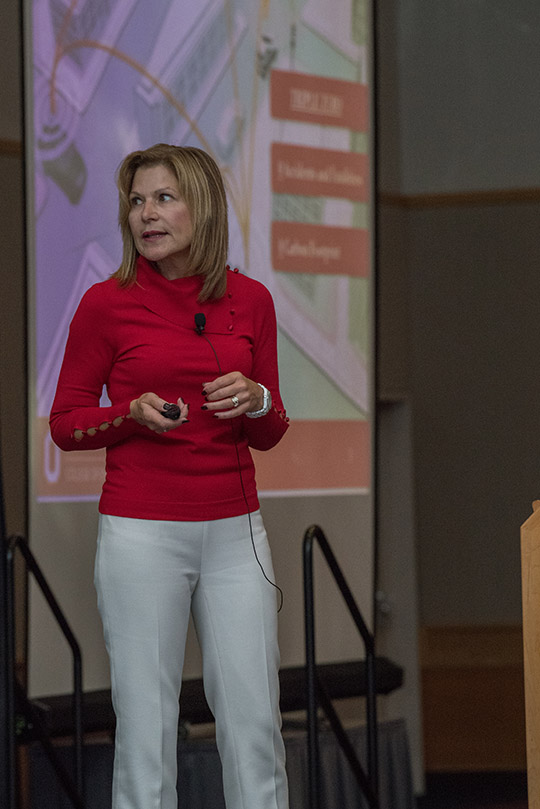 Carla Bailo, AVP for mobility research and business development at OSU, spoke at ION GNSS+ on Sept. 26. Photo: Institute of Navigation.
Carla Bailo, AVP for mobility research and business development at OSU, spoke at ION GNSS+ on Sept. 26. Photo: Institute of Navigation. If all goes as planned, Columbus, Ohio will become one of the smarter cities around, using drones to deliver medical supplies, autonomous shuttles for college students, and a smart infrastructure that will help with buses, traffic congestion, collision avoidance for both vehicles and pedestrians, and much more.
By Inside GNSSEditor’s Note: Logan Scott, a GPS signal expert and a consultant specializing in radio frequency signal processing and waveform design for communications, navigation, and other systems, wrote this report following an incident at the ION GNSS+ 2017 conference in which spoofing by a GNSS signal generator affected numerous smartphones.
By Inside GNSS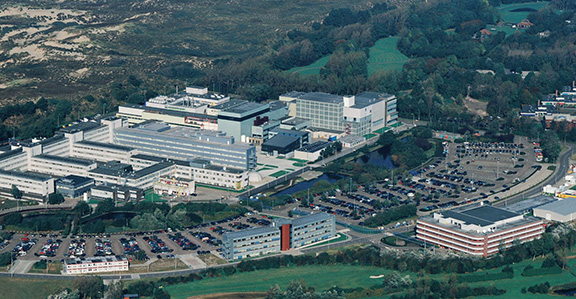 European Space Agency’s ESTEC in Noordwijk
European Space Agency’s ESTEC in Noordwijk European Space Agency’s ESTEC in Noordwijk
European Space Agency’s ESTEC in NoordwijkDr. John Betz will be teaching “Using Advanced GNSS Signals and Systems” (Course 541) at ESA/ESTEC, Noordwijk, The Netherlands, October 23-26, 2017. This intensive and unique NavtechGPS course enables attendees to achieve proficiency, not merely familiarity, with the essential aspects of using GPS/GNSS signals and systems.
By Inside GNSSAs a child Stan Honey taught himself navigation and he admits he was “always good at math” and “just found navigation interesting.”
When he shared his many tales with the crowd in the Oregon Ballroom Tuesday night at the ION GNSS+ during the Plenary Session, the Yale- and Stanford-trained engineer entertained the audience with a wealth of information on early navigation systems, current navigation technologies, and how he and his colleagues developed many of the systems used to enhance the way millions of fans watch sports on television.
By Inside GNSSIf all goes as planned the world’s satellite navigation providers will be launching dozens of satellites between now and the end of the decade.
The activity just this year and next is remarkable, said John Betz of the MITRE Corp., who co-chaired the panel with José- Ángel Ávila-Rodriguez of the European Space Agency.
By Inside GNSS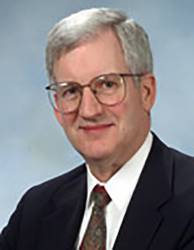 Martin Faga, a former assistant secretary of the Air Force for space. GPS.gov photo.
Martin Faga, a former assistant secretary of the Air Force for space. GPS.gov photo.The battle lines over restructuring the management of military space were drawn sharply Sept. 18 when the Senate passed its version of the National Defense Authorization Act for Fiscal Year 2018.
By Inside GNSS One of 12 magnetograms recorded at Greenwich Observatory during the Great Geomagnetic Storm of 1859
One of 12 magnetograms recorded at Greenwich Observatory during the Great Geomagnetic Storm of 1859 1996 soccer game in the Midwest, (Rick Dikeman image)
1996 soccer game in the Midwest, (Rick Dikeman image)
 Nouméa ground station after the flood
Nouméa ground station after the flood A pencil and a coffee cup show the size of NASA’s teeny tiny PhoneSat
A pencil and a coffee cup show the size of NASA’s teeny tiny PhoneSat Bonus Hotspot: Naro Tartaruga AUV
Bonus Hotspot: Naro Tartaruga AUV
 Pacific lamprey spawning (photo by Jeremy Monroe, Fresh Waters Illustrated)
Pacific lamprey spawning (photo by Jeremy Monroe, Fresh Waters Illustrated) “Return of the Bucentaurn to the Molo on Ascension Day”, by (Giovanni Antonio Canal) Canaletto
“Return of the Bucentaurn to the Molo on Ascension Day”, by (Giovanni Antonio Canal) Canaletto The U.S. Naval Observatory Alternate Master Clock at 2nd Space Operations Squadron, Schriever AFB in Colorado. This photo was taken in January, 2006 during the addition of a leap second. The USNO master clocks control GPS timing. They are accurate to within one second every 20 million years (Satellites are so picky! Humans, on the other hand, just want to know if we’re too late for lunch) USAF photo by A1C Jason Ridder.
The U.S. Naval Observatory Alternate Master Clock at 2nd Space Operations Squadron, Schriever AFB in Colorado. This photo was taken in January, 2006 during the addition of a leap second. The USNO master clocks control GPS timing. They are accurate to within one second every 20 million years (Satellites are so picky! Humans, on the other hand, just want to know if we’re too late for lunch) USAF photo by A1C Jason Ridder.  Detail of Compass/ BeiDou2 system diagram
Detail of Compass/ BeiDou2 system diagram Hotspot 6: Beluga A300 600ST
Hotspot 6: Beluga A300 600ST

1. Mangrove Tree-Planting Drones
Myanmar (Southeast Asia)
Today’s headlines frame my thoughts about securing GNSS assets, which one expert has characterized as our “least visible and most vulnerable infrastructure.”
By Inside GNSSLockheed Martin announced that its second-generation satellite-based augmentation system (2nd Gen SBAS) testbed started broadcasting in dual frequency, multi-constellation (DFMC) during testing this week that was moved up from originally scheduled dates.
By Inside GNSS